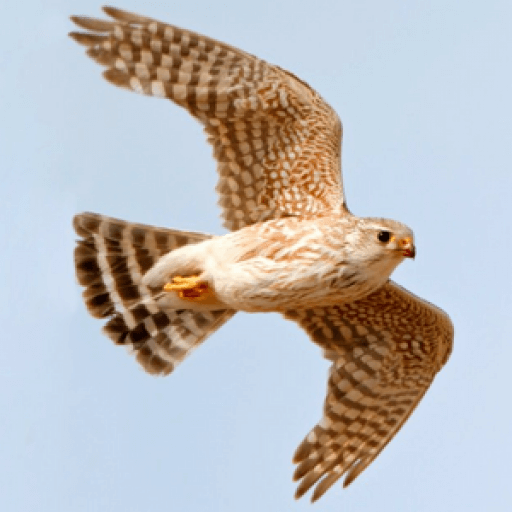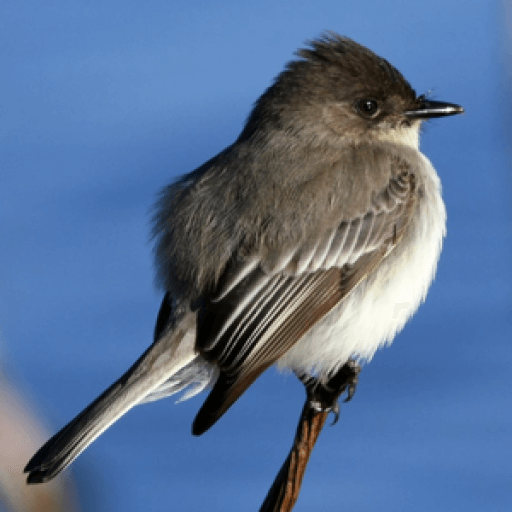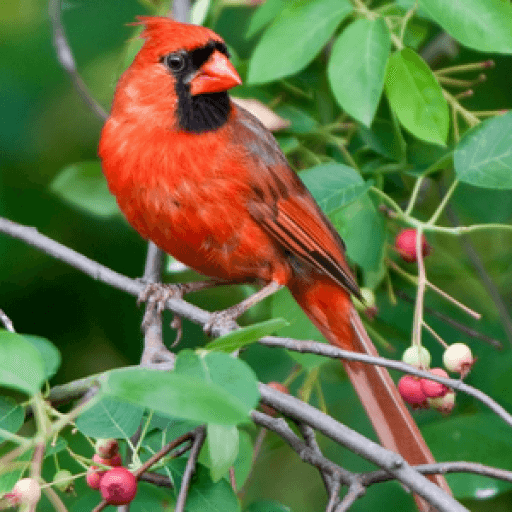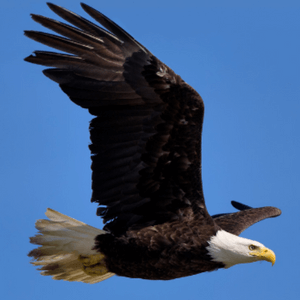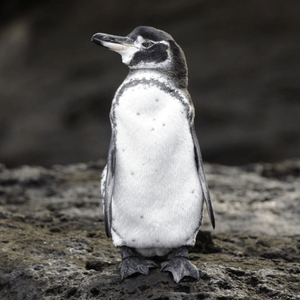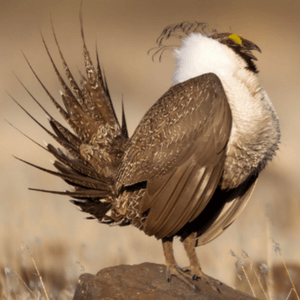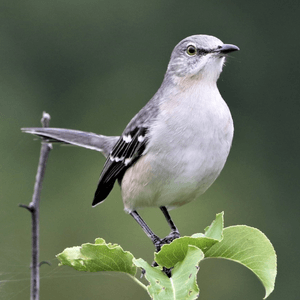American Bird Conservancy's Top 10 Birds of 2021
Few may remember 2021 fondly, but if there is a silver lining, it's that many of us took advantage of our time at home to connect or re-connect with birds we love. In that spirit, we've decided to close 2021 on a positive note by focusing on the most popular birds of the year.
With so many birds to choose from, it's natural to wonder how we compiled our list. First, we limited our selection to the 51 species featured as ABC's Bird of the Week in 2021. Next, we looked at website data to see which generated the most interest.
The results, as you'll see below, yielded an impressive array of charismatic birds — with a few surprises mixed in. Take a look at the list, which is ranked from least to most popular, and please keep in mind that we've included hyperlinks to full species accounts so you can learn more about each bird.
Finally, if you're not already receiving our Bird of the Week email series, sign up now. Each week, we introduce readers to a new bird via our free multimedia species profiles. From Alaska to Argentina, we bring the stunning diversity of birds to life.
10. Merlin
A formidable bird-hunter about the same length as the related American Kestrel, the Merlin is more powerfully built and seems far larger — more like a miniature Peregrine Falcon.
This talented aerialist terrorizes sandpiper, songbird, and pigeon flocks; indeed, its scientific name means “pigeon-like falcon” or “pigeon falcon.” Its common name was once Pigeon Hawk. Read more
9. Summer Tanager
The rose-red male Summer Tanager is the only completely red bird in North America — the male Northern Cardinal has a black mask; the closely related Scarlet Tanager has black wings and tail; and the duller-red Hepatic Tanager has grayish flanks and cheek patches. The female Summer Tanager is a warm orangish-yellow, and first-spring males have an interesting intermediate plumage patched with yellow and red. Read more
8. Rose-breasted Grosbeak
The male Rose-breasted Grosbeak is strikingly beautiful. But it has a gruesome folk name: “cut-throat,” owing to the red swatch across its breast. The name “grosbeak” comes from the French term grosbec, meaning “large beak.”
A fairly common denizen of the deciduous woodlands of northern North America, the Rose-breasted Grosbeak retreats to the tropics in winter, where it is often found in flocks feeding on fruiting trees. Read more
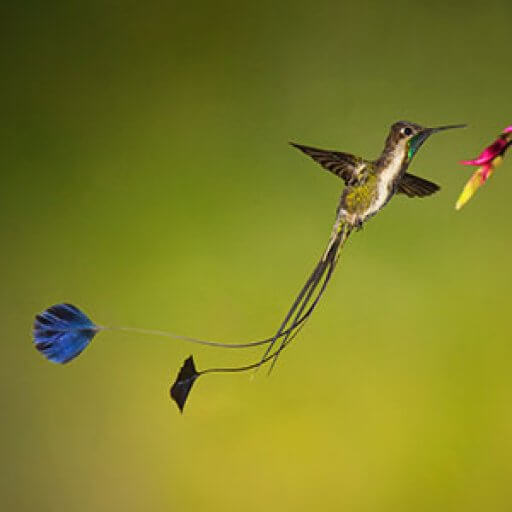
7. Marvelous Spatuletail
The Marvelous Spatuletail, like many hummingbird species including the Black-eared Fairy and Rainbow-bearded Thornbill, has a name that is both charming and descriptive.
This beautiful little hummingbird shines in shades of white, green, and bronze; the male also sports vivid blue crest feathers, a brilliant turquoise gorget, and a black line on its white underparts. The only member of the genus Loddigesia, the species was first described in 1835. It's only found in the Rio Utcubamba Valley in northern Peru. Read more
6. Eastern Phoebe
The Eastern Phoebe may lack visual appeal, but this drab little flycatcher is popular among birdwatchers. It's easy to identify, both for its onomatopoeic calls and tail-wagging habit. And it's often in view: An Eastern Phoebe pair will often nest on or near human-made structures. The species is a reliable herald of spring, as one of the earliest songbirds to return to eastern U.S. breeding areas.
The unusual spelling of the Eastern Phoebe's name harkens back to Greek mythology: Phoebe was the daughter of “Earth” (Gaea) and “Sky” (Uranus), another fitting tie-in to this outdoor neighbor to many. Read more
5. Northern Cardinal
In the East, few birds are as familiar and well-loved as the Northern Cardinal. The male "Redbird" is unmistakable, with a distinctive crest and vivid red plumage. The female's plumage of brown with red accents is more subdued, but she sings just as beautifully as her mate.
Widely distributed in the East, the Northern Cardinal can be admired from southeastern Canada south through the eastern and central United States. It also occurs in southern Arizona and New Mexico, as well as in most of Mexico and in northern Belize and Guatemala. It is an introduced species in Hawai'i, southern California, and Bermuda. Read more
4. Bald Eagle
The majestic Bald Eagle is the only eagle species found solely in North America. It is well-known, even to non-birders, as the national symbol of the United States, an honor it was granted in 1782. The Golden Eagle, also found in North America, is more widely distributed, occurring as well in Eurasia and even some parts of northern Africa.
The Bald Eagle's Latin name accurately reflects its appearance and habits: Hali and aiētos mean “sea eagle,” and leuco and cephalos mean “white head.” The use of the word "Bald" in its English name does not mean hairless; rather, it derives from the Middle English word “balde,” which means shining white. Read more
3. Galapagos Penguin
The Galapagos Penguin is the smallest South American penguin, and the only one to live near the equator. It shares the Galápagos Archipelago with other seabirds such as the Galapagos Petrel and Waved Albatross. It is the most northerly-breeding penguin species in the world. In fact, a small part of the population actually lives just north of the equator. This species is closely related to the Magellanic, Humboldt, and African Penguins, which are found further south. Read more
2. Greater Sage-Grouse
Each spring heralds a unique spectacle on brushy western plains of North America. Year after year, male Greater Sage-Grouse congregate on ancestral display grounds known as leks. There, the males strut about, fanning spiky tail feathers and raising feathered white collars while inflating bright yellow throat sacs — all the while making a weird assortment of booming, swishing, and popping noises. Female sage-grouse, the object of all this parading, look on with a critical eye.
Although male birds of other species, from the Greater Prairie-Chicken down to the Club-winged Manakin and Chilean Woodstar hummingbird, also display on leks, the Greater Sage-Grouse has come to represent a wider landscape. Read more
1. Northern Mockingbird
The Northern Mockingbird is well-known for its powers of mimicry. Nicknamed the "American Nightingale," this remarkable species has been recorded as learning the songs and calls of hundreds of other birds, as well as musical instruments, car alarms, and many other sounds. Its scientific name, which means "many-tongued mimic," reflects this vocal prowess.
The Northern Mockingbird belongs to the family Mimidae, which also includes the Sage and Bendire's Thrashers, and catbirds. From southern Mexico into South America, the species is replaced by the closely related Tropical Mockingbird, with which it occasionally hybridizes. Read more
Birds in Trouble
In less than a single human lifetime, 2.9 billion breeding adult birds have been lost from the United States and Canada, across every ecosystem. This includes familiar birds: The Dark-eyed Junco has lost an incredible 175 million individuals from its population. The White-throated Sparrow has lost 93 million.
Scientists have identified that habitat loss is the biggest overall driver of bird declines. Habitat loss occurs when land is converted for agriculture, development, resource extraction, and other uses. Habitat degradation is a second cause of losses. In this case, habitat doesn't disappear outright but becomes less able to support birds, such as when habitat is fragmented, altered by invasive plants, or when water quality is compromised.
Aside from habitat loss and degradation, other major human-caused threats to birds come from cats and other invasive species; collisions with glass and industrial infrastructure such as communications towers and wind turbines; and exposure to pesticides and other toxics.
Climate change is expected to exacerbate these threats, and also to create new challenges; for example, by changing habitat distributions and shifting the timing of peak food supplies for birds.
How Can I Help?
Everyone has a role to play in helping birds rebound.
You can start at home by living a bird-friendly life. If you have a yard or any natural areas around your home, you can take steps to make these areas more bird-friendly by planting native trees and bushes.
Policies enacted by Congress and federal agencies, such as the U.S. Fish and Wildlife Service, have a huge impact on birds. You can help shape these rules for the better by telling lawmakers to prioritize birds, bird habitat, and bird-friendly measures. To get started, visit ABC's Action Center.
American Bird Conservancy and our Joint Venture partners have improved conservation management on 6.4 million acres of U.S. bird habitat — an area larger than the state of Maryland — over the last ten years. In Latin America and the Caribbean, we've worked with local partners to create more than 70 reserves, protecting some of the rarest birds in the world. This is a monumental undertaking, requiring the support of many, and you can help by making a gift today.





































